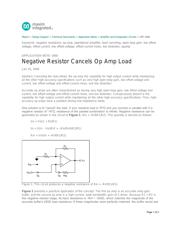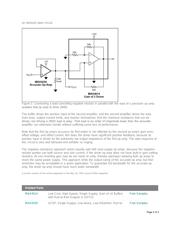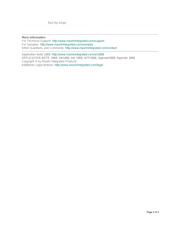下载

Maxim > Design Support > Technical Documents > Application Notes > Amplifier and Comparator Circuits > APP 1868
Keywords: negative resistance, op amp, operational amplifier, load canceling, open-loop gain, low offset
voltage, offset current, low offset-voltage, offset-current noise, low distortion, opamp
APPLICATION NOTE 1868
Negative Resistor Cancels Op Amp Load
Jan 31, 2003
Abstract: Canceling the load allows the op amp the capability for high output current while maintaining
all the other high-accuracy specifications such as very high open-loop gain, low offset voltage and
current, low offset-voltage and offset-current noise, and low distortion.
Accurate op amps are often characterized as having very high open-loop gain, low offset voltage and
current, low offset-voltage and offset-current noise, and low distortion. Conspicuously absent is the
capability for high output current while maintaining all the other high-accuracy specifications. Thus, high-
accuracy op amps have a problem driving low-impedance loads.
One solution is to "cancel" the load. If your resistive load is "R"Ω and you connect in parallel with it a
negative resistor of "-R"Ω, resistance of the parallel combination is infinite. Negative resistance can be
generated as shown in the circuit of Figure 1: Rin = -Rnf(R1/R2). This quantity is derived as follows:
Vo = Vin(1 + R2/R1)
Iin = (Vin - Vo)/Rnf = -(Vin/Rnf)(R2/R1)
Rin = Vin/Iin = -Rnf(R1/R2).
Figure 1. This circuit produces a negative resistance of Rin = -Rnf(R1/R2).
Figure 2 presents a practical application of the concept. The first op amp is an accurate unity-gain
buffer, and the second op amp is a high-current, wide-bandwidth, gain-of-2 driver. Because R1 = R2 in
this negative-resistor stage, its input resistance is -Rnf = -200Ω, which matches the magnitude of the
accurate buffer's 200Ω load resistance. If these magnitudes were perfectly matched, the buffer would see
Page 1 of 3





